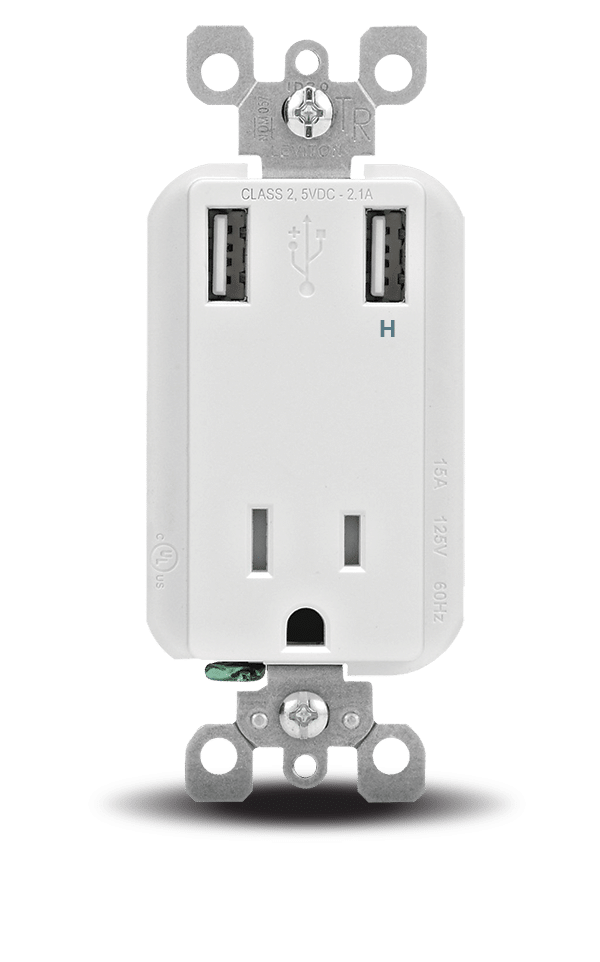Replacing a standard 120-volt AC, 15-amp outlet with one that provides USB charging for two devices ends charging clutter
In the current era (pun intended), personal electronic equipment is a big part of everyone’s lives – even while traveling in a motorhome. Whether it’s a cellphone, a GPS, a tablet or a laptop, just about everyone is using some type of compact electronic device. Of course, charging these devices is also a big part of the electronic experience, which means a plethora of power cords is needed to keep the batteries fully charged. The most common plug used for charging nearly every device inserts into a USB port in a power converter that plugs into the standard 120-volt AC electrical receptacle.

The Leviton 15-amp wall outlet with dual USB connections replaces the standard 120-volt AC receptacles found in all motorhomes.
Limiting clutter is a big thing in a motorhome and it’s easy to install your own charging station by utilizing existing space: one of the convenient 120-volt AC outlets in the coach. A number of companies that supply standard household electrical outlets to the housing market have added USB power connections alongside the normal three-prong receptacle, and Leviton, a name common in the household building industry, is one of these companies.
The Leviton T5630 is a specialized outlet that replaces an existing standard 15-amp unit and adds two 5-volt DC-powered USB ports. The right port is designed for the higher power needs of items like laptops, tablets, Blackberry smartphones or gaming devices, while the left port is suitable for smaller-battery devices like iPhones, MP3 players and e-readers. Two devices, supported by USB 2.0, can be charged at one time; a smart chip recognizes the devices and provides an optimal charge rate. The outlet offers 2.1-amp overall current; most device chargers are converted to 5 volts.
Installation is a simple process of swapping out an existing receptacle. After disconnecting all power to the coach (turn off the AC generator, disconnect the inverter and unplug the shorepower), remove the cover plate of the existing outlet. Then remove the two screws holding the socket to the box or the wall. Before touching any wires, ensure that there is no electricity by using a multimeter. Now with all the wiring exposed and accessible, note how the outlet is wired and the color of the wires. Color coding is marked on the back of the new Leviton receptacle (white is neutral, black is hot and green is ground). Make sure there is at least ¾-inch of insulation stripped back, and all the wires can be secured to the new outlet just as they were to the old outlet. If the wires were just inserted in the clip holes in the back of the old outlet and not connected under the old outlet’s screws, it’s best to connect the wires under the new outlet’s screws for the most secure installation.

After the original outlet was removed, the wall opening was modified slightly to fit the new box. Color coding makes wiring the Leviton outlet a simple process.
The only caveat to this project is to make sure there’s enough depth in the wall to accept the new outlet. For our installation, the wall had to be modified to fit the box. Even so, the swap took only 30 minutes. The Leviton outlet was $20 at a home improvement store and total expense was less than $30 with the modifications.
Leviton Manufacturing Co.
www.leviton.com


